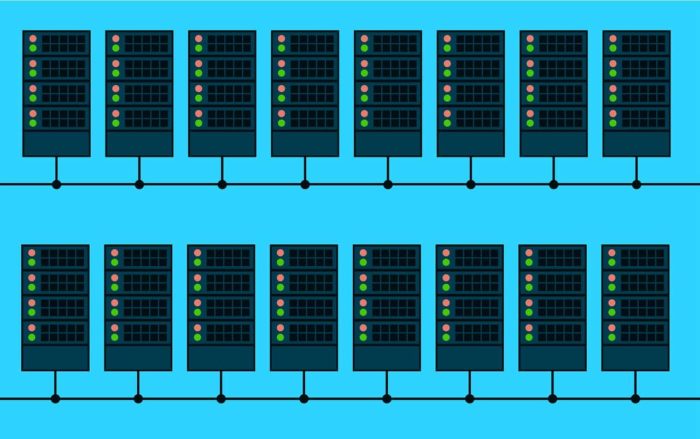Between hybrid, on-prem, multi, colo, centralized, and distributed clouds, it can be hard to keep all the terminology straight. What are the differences between these cloud architectures? Why use one rather than the other? In this article, we will focus on the benefits and features of one of these: the distributed cloud.
What is a Distributed Cloud?
As opposed to the large public cloud where all computing is done in a central location, a distributed cloud consists of a system of servers that are not all in the same place even though they are managed through a single cloud provider. The servers in a distributed cloud can be anywhere in the world! This allows for the computing to be done closer to the end-user, which improves the user experience in a multitude of ways.
For a more in-depth analysis of distributed computing, see our article on What is Distributed Computing.

What are the Advantages of Using a Distributed Cloud?
Below are five of the key benefits of using a distributed, rather than a centralized, cloud.
1. Data Regulation Compliance
Many countries have specific compliance requirements for their citizen’s data and do not allow for personal/financial data to be hosted outside of their borders. Thus, having a distributed server within those countries alleviates that issue. Data can be processed within the country in compliance with local laws.
2. Reduced Latency
In a distributed cloud model, servers can be placed in a wide array of locations. When servers are placed closer to end-users as opposed to in a centralized location, data does not need to travel as long a distance to get back to the server. As a result, latency is reduced and the end-user gets their results more quickly.
3. Improved CDNs
A distributed cloud can be used to deploy content delivery networks, or CDNs, to speed up delivery speeds. Heavy content (e.g. videos) can be stored and delivered by the distributed cloud closer to end-users, which enhances the user experience.
4. Network Resilience
Network connectivity is always a worry for cloud providers. If their system goes down, all of the user’s workloads will not be able to run! In a distributed cloud system, however, the network is at a reduced risk of failure because in the event of a system crash cloud services can reside in a local or semilocal subnet. This allows these services to operate intermittently untethered, and end-users will feel no disruption.
5. Location Flexibility
A distributed cloud can always become more distributed. More locations are able to be added to the distributed network, broadening the global compute zones available within that cloud. Companies that are looking to reach users in specific locations around the world can use a distributed cloud to reach them.

Ridge’s Distributed Cloud
Ridge’s distributed cloud is unique. Ridge creates a distributed cloud by connecting to existing infrastructure around the world, under one API. Businesses enjoy the benefit of running workloads in multiple locations without needing to upkeep any of the distributed infrastructures. From a single UI, users pick an existing data center to send their workloads to and, within minutes, begin deploying.
Ridge’s cloud leverages legacy data center and on-premises capacity as a foundation for modern cloud-native services, such as managed Kubernetes and object storage. Until now, such services were only available from large public cloud providers. This is no longer true. On Ridge’s distributed cloud, developers use modern APIs to programmatically enable applications to run on physical resources anywhere they need them to be.
As opposed to the traditional cloud model, the distributed cloud is changing the way people think about the public cloud. While the large public cloud providers benefit from economies of scale, a distributed cloud takes advantage of the economies of locality and distribution and thus has the flexibility to handle emerging location-dependent apps, such as the new wave of Internet of Things applications.














